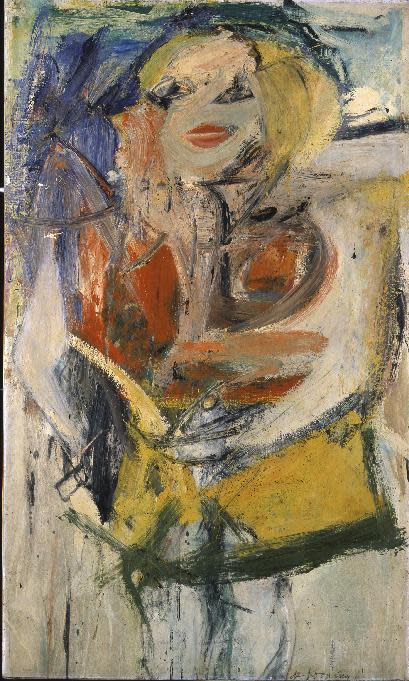Gallery eyes portraits in the age of abstract art
WASHINGTON (AP) — When abstract expressionism was all the rage in American art in the mid-20th century, many artists thought the art of painting portraits was dead.
Artist Chuck Close went so far as to say that making a portrait was "the dumbest, most moribund, out-of-date and shopworn of possible things you could do." But at the same time, Close and other artists from the era began reinventing the tradition of portraits by making the images more abstract.
A new exhibit at the Smithsonian's National Portrait Gallery explores how Andy Warhol, Robert Rauschenberg, Roy Lichtenstein, Elaine de Kooning and others pushed the boundaries of portraiture between 1945 and 1975. "Face Value: Portraiture in the Age of Abstraction" is a different kind of show for the museum, with quirky and unexpected ways to represent people through paintings, drawings, prints and sculpture.
Familiar subjects include Marilyn Monroe, Jack Kerouac, Jackie Kennedy and Warhol. But Willem de Kooning's portrait of Monroe is not exactly a portrait of a beautiful lady.
"If you put your thumb over the nose, eyes and mouth there, you've got this lovely abstract painting," said curator Wendy Wick Reaves. "But it's not an abstract painting. It is a portrait of Marilyn Monroe."
Abstract and figurative artists would borrow from each other in techniques, composition and style.
Earlier in the 1940s, portraits tended to be small, recognizable, realistic and tried to capture the essence of someone's personality, Reaves said. In the age of abstraction, though, many portraits became bigger, bolder and less logical and literal.
"There's a certain element of defiance, thumb-on-your-nose defiance, and self-consciousness about going back to the face and figure," Reaves said. "These artists are all learning about abstraction."
Lichtenstein was commissioned by Time magazine to create a colorful pop art cover image of Robert F. Kennedy. Warhol would tweak and manipulate press photos of Jackie Kennedy for a series of paintings and silkscreen prints, some with a black-and-white shimmer of a TV image. And Larry Rivers would draw an image of Kerouac with minimal features of his face.
Curators brought together more than 50 artworks for the show. The exhibit is on view through Jan. 11.
___
National Portrait Gallery: http://npg.si.edu/
___
Follow Brett Zongker at https://twitter.com/DCArtBeat

 Yahoo News
Yahoo News 


